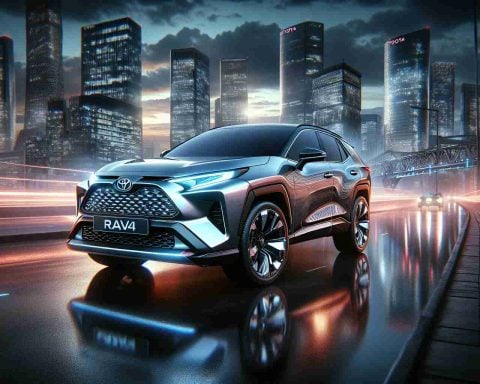Norway Leads the Way in Electric Vehicle Adoption
Norway has solidified its status as a global frontrunner in electric vehicle (EV) sales, with an astounding 90% of new car purchases last year being electric. This Scandinavian country has become synonymous with the shift toward sustainable transportation, capturing attention worldwide for its significant strides in the “electric car race.”
The journey began in the 1990s when Norway initiated efforts to promote EVs. Although initial endeavors met with limited traction, they successfully paved the way for increased public awareness and acceptance of electromobility.
The nation’s dedication to combating climate change is evident through strong governmental policies, advanced infrastructure, and widespread public support. Norway’s wealth, driven by vast oil and gas resources, has also played a crucial role in accelerating EV adoption. Notably, the government imposes high taxes on fossil fuel vehicles while eliminating import and value-added taxes for EVs, enhancing their appeal to consumers.
In Oslo, electric vehicles enjoy additional perks such as exemptions from road tolls and perpetual access to bus lanes. This consistent policy framework has proven effective, unlike in other regions where incentives often fluctuate.
Norway has set an ambitious target for all new cars to be zero-emission by 2025, placing it ahead of many European counterparts. While the goal is within reach, overcoming the remaining barriers to achieve it may present challenges as some sectors, like rental companies, still cling to conventional vehicles.
Norway’s Electric Vehicle Revolution: Trends, Innovations, and Insights
Introduction
Norway’s adoption of electric vehicles (EVs) is not only impressive but also showcases a comprehensive approach to sustainable transportation. With 90% of new car sales being electric, the Nordic nation is setting new standards for EV adoption globally. This article delves deeper into Norway’s EV landscape, highlighting trends, innovations, and insights that define its unique market.
Features of Norway’s EV Market
1. Government Policies and Incentives:
Norway’s government employs robust policies that stimulate EV adoption. These include:
– Tax Exemptions: EVs are exempt from import duties and value-added tax, significantly lowering their upfront cost.
– Subsidies: Financial incentives are provided to consumers who purchase EVs, making them more attractive than traditional fossil-fuel vehicles.
– Infrastructure Investment: The government invests heavily in charging infrastructure, ensuring easy access to charging stations.
2. Charging Infrastructure:
Norway boasts one of the world’s most comprehensive charging networks. With thousands of charging stations across the country, the ease of charging has encouraged more consumers to make the switch to electric.
3. Innovative Technology Integration:
Many EVs in Norway are equipped with cutting-edge technology, including:
– Advanced Driver Assistance Systems (ADAS)
– Over-the-air software updates
– Smart charging capabilities that allow users to charge during off-peak hours for cost efficiency.
Use Cases of Electric Vehicles in Norway
– Urban Commuting: In cities like Oslo, EVs have become the go-to choice for commuters due to their access to bus lanes and exemptions from toll charges.
– Long-Distance Travel: Thanks to the extensive charging network, electric vehicles are increasingly seen as viable for long-distance journeys, supported by strategic placement of fast-charging stations along major routes.
Pros and Cons of Electric Vehicles
Pros:
– Environmental Impact: EVs contribute to lower greenhouse gas emissions and improved air quality.
– Cost-Effectiveness: With savings on fuel and maintenance costs, EVs can be more cost-effective in the long run.
Cons:
– Initial Cost: Although prices are decreasing, the initial purchase price of EVs can still be higher than traditional vehicles in many markets.
– Battery Concerns: Issues related to battery longevity and recycling remain areas of concern.
Trends in EV Adoption
– Growing Popularity of Second-Hand EVs: With the rise in EV adoption, the second-hand EV market is also booming in Norway, making electric cars more accessible to a wider demographic.
– Corporate Fleets Going Electric: An increasing number of companies in Norway are transitioning their vehicle fleets to electric, driven by sustainability goals and tax advantages.
Limitations and Challenges
Despite commendable progress, Norway faces challenges in achieving its zero-emission goals by 2025:
– Resistance from Specific Sectors: Industries such as car rental companies tend to rely on conventional vehicles, posing hurdles to widespread EV acceptance.
– Infrastructure Maintenance and Expansion: As EV adoption grows, maintaining and expanding charging infrastructure will be critical.
Future Insights
Looking ahead, Norway is not just focusing on EVs but is also preparing for the integration of autonomous driving technology and renewable energy sources to power these vehicles. Predictions suggest that by the end of the decade, electric cars could represent an even higher percentage of new car sales, potentially reaching 100% by the mid-2030s.
Conclusion
Norway’s commitment to electric vehicle adoption sets a powerful example globally. With its innovative policies and infrastructure investments, the country is not just participating in the electric car revolution but leading it. As other nations observe Norway’s strategies, they may adopt similar approaches to accelerate their own transitions towards a sustainable automotive future.
For more insights into the evolving automotive landscape and Norway’s leading role, visit Norway’s official site.












